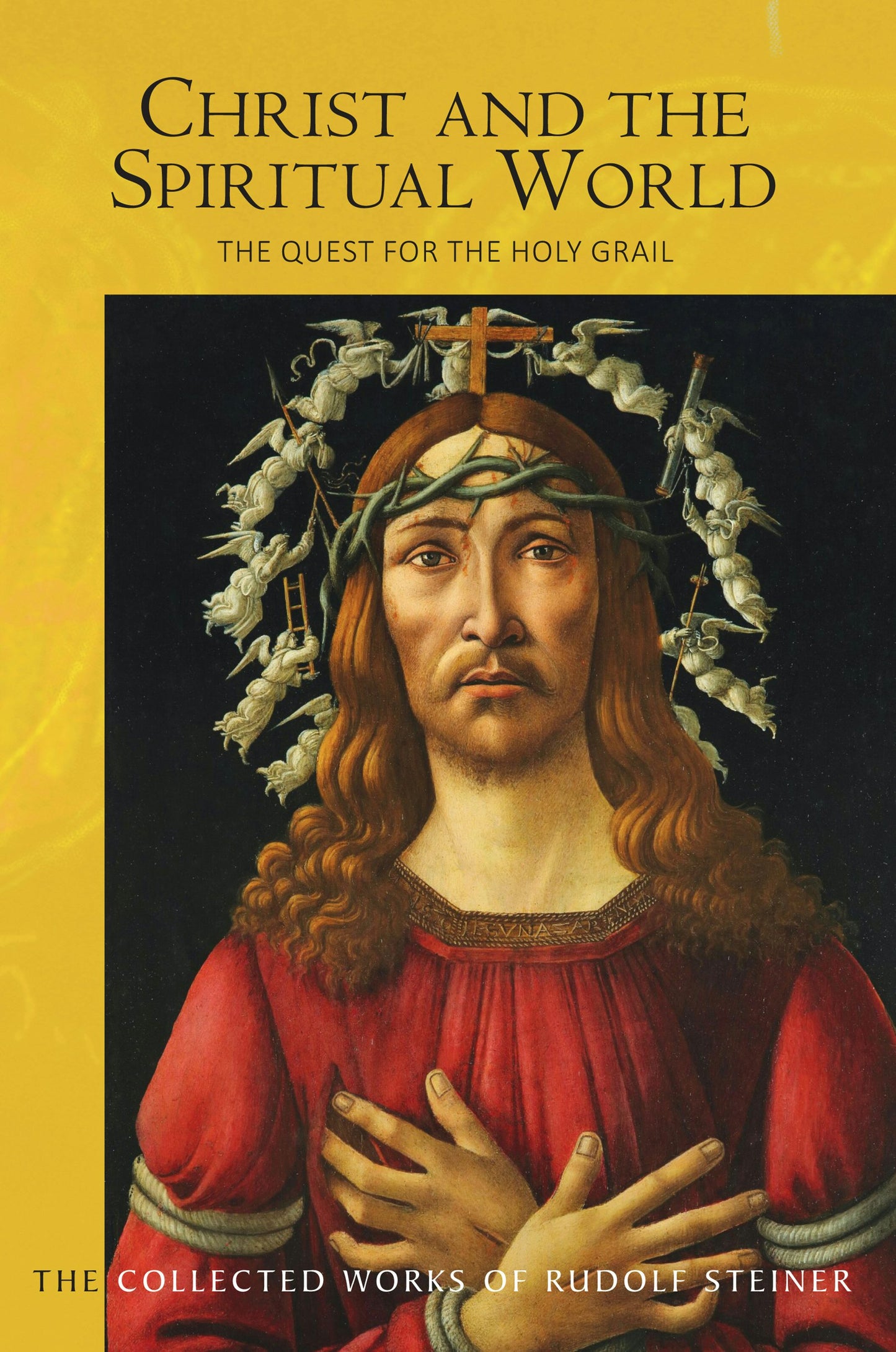Christ and the Spiritual World
Christ and the Spiritual World
Couldn't load pickup availability
6 lectures, Leipzig, December 28, 1913 – January 2, 1914 (CW 149).
“Rudolf Steiner begins this cycle of lectures with a disconcerting promise not to provide answers, but rather to make us ‘disturbingly aware of how contradictions, difficulties, must pile up before the soul of anyone who wants to accept, in the right sense, our anthroposophical knowledge concerning humanity in the evolution of the world.’ It seems that to be an anthroposophist implies not the comfortable possession of some set of truths, but rather incessant wrestling with difficulties and outright contradictions.” — Frederick Amrine (introduction)
Reassessing human history in relation to the cosmic and earthly events of Christ’s incarnation, Rudolf Steiner stresses the significance of Gnostic spirituality and legends of the Holy Grail. He tells us that the Christ impulse “is not a one-time event but a continuous process, beginning well before Jesus of Nazareth walked the earth.” The Christ impulse is a force that gives impetus to human development, such as the extraordinary flowering of free thinking during the past two millennia.
“Now from the outset I would like to say that when in these lectures I speak of the Mystery of Golgotha, I do not wish to invest this term with any coloring drawn from religious traditions or convictions. We shall be concerned purely with objective facts that are fundamental to human evolution, and with what physical and spiritual observation can bring to light. I shall leave aside everything that individual religious creeds have to say about the Mystery of Golgotha and shall look only at what has happened in the course of human evolution. I shall have to say many things which will be made clear and substantiated later on.” — Rudolf Steiner (lecture 1)
Surveying this pattern of evolving human thought, Steiner explains the roles of historical figures such as the great teacher Zarathustra, Joan of Arc, and Johannes Kepler. We are shown the widespread influence of the sibyls, the clairvoyant prophets who formed a backdrop to the Greco-Roman world. Steiner contrasts their revelations to those of the Hebrew prophets.
The lectures culminate in the secret background of the Parsifal narrative. Steiner illustrates how it is possible to experience the Holy Grail by reading the starry script at Eastertime. He also provides a rare personal account of the processes he uses to conduct esoteric research.
This new edition features a revised translation and an introduction, appendices, and notes by Frederick Amrine.
Christ and the Spiritual World is a translation from German of Christus und die geistigen Welt. Von der Suche nach dem heiligen Gral (GA 149). Cover image: L’uomo dei dolori (The Man of Sorrows), aka Cristo dei dolori (Christ of Sorrows), c.1500–1510, by Sandro Botticelli (1445–1510), tempera and oil on panel (private collection)
Share


